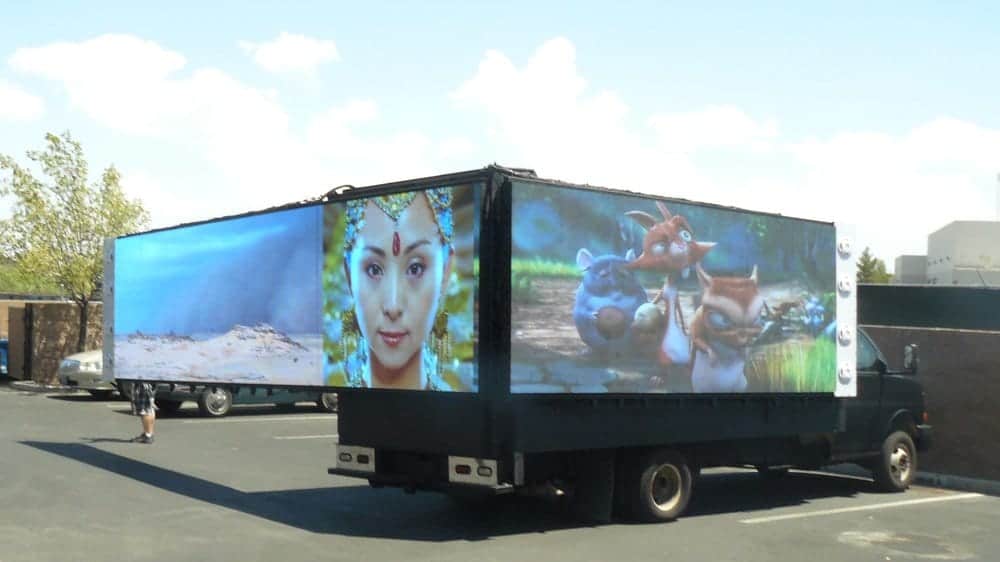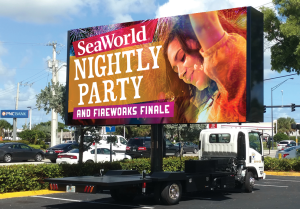Ads On Trucks Are Missing the Moment
At first glance, ads on trucks seem like a clever marketing tactic: mobile billboards that roam through urban streets, blasting brand visibility to everyone in sight. But here’s the catch—awareness doesn’t equal action. And in today’s data-driven, engagement-obsessed marketing landscape, action is everything.
For marketing professionals focused on ROI and real-time results, ads on trucks are hitting a wall. Especially when it comes to QR-based interactivity, truck campaigns suffer from a fundamental flaw: the viewer simply can’t scan in motion.
Ads On Trucks Are Designed for Visibility, Not Interactivity
Let’s break this down. The explosion of QR codes in advertising has transformed traditional media into actionable touchpoints. Consumers can scan to redeem a coupon, watch a video, or buy a product. But what happens when that QR code is speeding down the freeway or stuck in traffic across four lanes?
Trucks Ads Are Physically Unscannable
Whether it’s a Trucks ad on a trailer, box truck, or van wrap, these formats were built for static messaging—not interaction. Expecting someone to scan a QR code on a moving vehicle is unrealistic and, frankly, unsafe. The format fails at the very moment when consumer interest peaks—the point of action.
Dwell Time Doesn’t Equal Decision Time
While a parked trucks advertisement may earn glances, it rarely aligns with the user’s decision journey. The interaction is passive and out of context. Compare that to a pharmacy bag ad or pizza box with a QR code, where the consumer is in a moment of pause, ideally positioned to engage.
Ads On Trucks Lack Precision and Context
Wide Reach, Narrow Relevance
Marketers may be impressed by the mileage metrics provided by advertising on trucks, but impressions don’t equal qualified views. You might reach 10,000 people, but how many of them are in your target ZIP code? Are they even your demographic?
With in-hand formats like coffee sleeves, door hangers, or hand sanitizer stand ads, brands can hyper-target by neighborhood, industry, or venue type, making each touchpoint more strategic and valuable.
No Way to Segment or A/B Test
With ads on trucks, you’re stuck with one message. There’s no versioning, no segmentation, and certainly no real-time optimization. Today’s marketers demand more agility than a vinyl-wrapped truck can provide.
Why the QR Disconnect Breaks the Funnel
Let’s focus on the heart of this issue: the QR code’s failure in motion.
Visual Clutter = Lower Scanability
QR codes require clear space, contrast, and steady visibility to function. A QR code surrounded by brand logos, slogans, and fast-moving visuals on a truck? It’s likely too small, hard to scan, and easy to miss.
Unsafe or Inconvenient Moments
Think of when people see ads on trucks: while driving, rushing on foot, or crossing the street. None of these are conducive to safe, frictionless scanning. Contrast that with ads in waiting rooms, coffee shops, or grocery carts, where scanning a code is low-effort and natural.
Zero Attribution and No Feedback Loop
Even if someone miraculously remembers your truck’s QR code later, you have no idea where the lead came from. In contrast, in-hand media with QR tracking provides campaign-level analytics—you know the ZIP code, the time of day, and the exact ad that triggered the engagement.
Trucks Ads Don’t Fit Modern Campaign Goals
Let’s be clear: awareness is not enough. Modern campaigns need:
Engagement
Action
Data
Ads On Trucks Can’t Deliver These
Whether it’s a brand campaign, lead generation push, or product launch, advertising on trucks offers little to no real performance data. CPM may seem attractive, but if there’s no attributable ROI, your budget is just burning rubber.
No Personalization, No Connection
In a world of hyper-personalized marketing, truck wraps scream “generic billboard.” Meanwhile, a grocery cart handle or hand sanitizer stand ad in a community clinic can feel personal, familiar, and timely.
What In-Hand Advertising Gets Right
So, what’s the better alternative for marketers looking to drive real action and scan behavior?
Strategic Placement in Idle Moments
In-hand formats like:
Pharmacy bags
Pizza box tops
Hand sanitizer stand ads
Bar coasters
These ads live in moments of pause, where consumers are receptive and relaxed. They scan out of curiosity—not chaos.
QR Optimization
Unlike truck wraps, in-hand media allows:
Proper QR sizing and placement
A/B testing of offers
Personalized landing pages
Real-time performance tracking
Tactile = Memorable
People remember what they touch. A trucks ad disappears the second it drives by. But a branded coffee cup or pizza box sits with your audience for minutes—and often gets shared or photographed.
Environmental and Budget Efficiency
Trucks Ads Burn Fuel, Not Just Budget
Mobile advertising comes with a literal carbon footprint. Between gas, emissions, and vinyl waste, ads on trucks are environmentally out of sync with ESG-conscious brands. In-hand formats like paper bags and sleeves are cost-effective, recyclable, and scalable.
Better Cost Control
Instead of booking a truck route that crosses unknown territory, you can direct every in-hand campaign to:
Specific clinics
Targeted cafes
Localized events
This ensures your budget supports your strategy—not just your visibility.
Ads On Trucks Are Outpaced by Smart Local Media
Let’s recap:
Factor |
Ads on Trucks |
In-Hand Media |
QR Scanability |
❌ |
✅ |
Targeting |
Broad |
Hyperlocal |
Recall |
Low |
High |
Attribution |
None |
Trackable |
Environment |
Polluting |
Sustainable |
Engagement |
Passive |
Tactile & Intentional |






